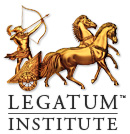 In his pre-Budget Report, Chancellor Darling announced that a £6 per year tax will be levied on all households with a fixed phone line, in order to pay for the expansion of the UK’s super-fast broadband services into rural areas.
In his pre-Budget Report, Chancellor Darling announced that a £6 per year tax will be levied on all households with a fixed phone line, in order to pay for the expansion of the UK’s super-fast broadband services into rural areas.
BT estimate that such expansion will cost £5bn, while Darling’s proposed scheme is expected to generate £170m per year. His target is to provide 90% of UK homes with super-fast broadband by 2017.
Impact for the post-bureaucratic age
The truth is that it is impossible to say what extending broadband will cost. Experts think 30% of homes will be by-passed by commercial fast broadband plans, but this figure will be market-dependent, so is very difficult to calculate accurately. Tax breaks for companies which provide rural broadband seem like a more reasonable solution. The Conservatives have said they will scrap the proposed tax if they win the election, and focus on market-driven solutions to the problem.
Broadband coverage is something of an elephant in the corner when it comes to discussing the post-bureaucratic age. Universal, fast, and reliable internet connections are absolutely fundamental to the speed and ease with which Britain can move into this new era. The government should see its provision as a necessary investment which will bring a return (by lowering the cost of public services), rather than a cost to be borne by the public.
The announcement may come as something of a boon to providers of mobile broadband, although the low £6 p.a. figure will probably not be enough to deter many consumers in favour of the higher speeds that fixed lines can bring.
See the excellent SamKnows site for more information on Digital Britain and the limits of broadband.
Ali Unwin ( @aliunwin)




